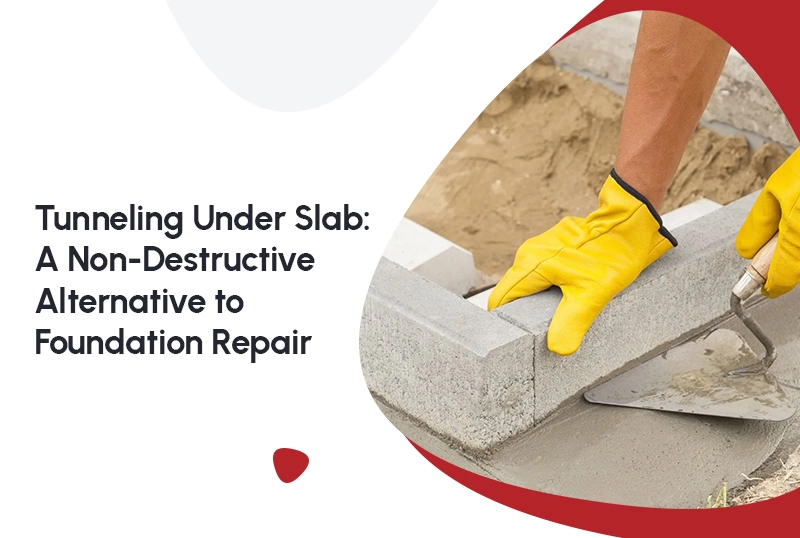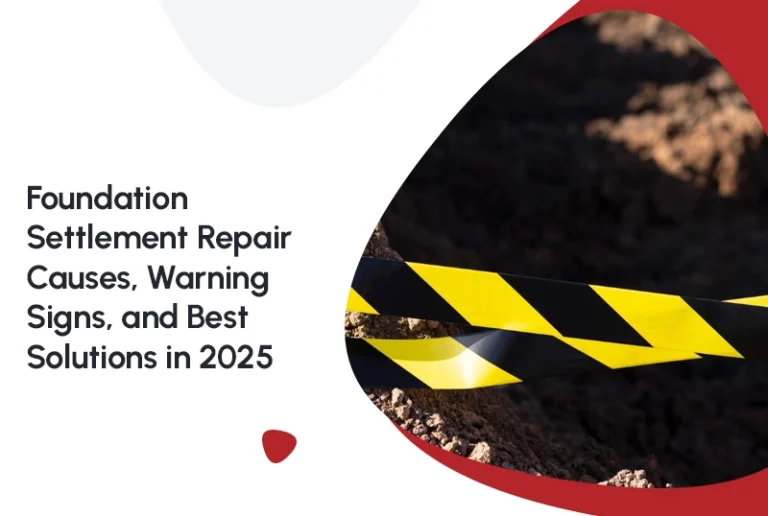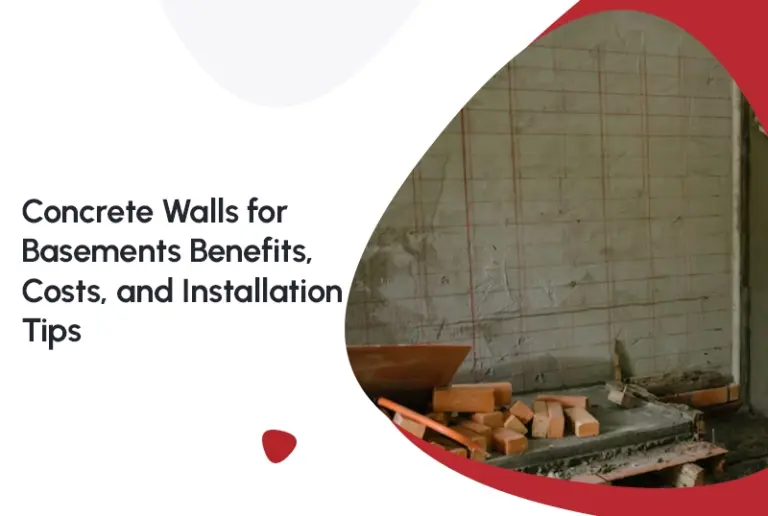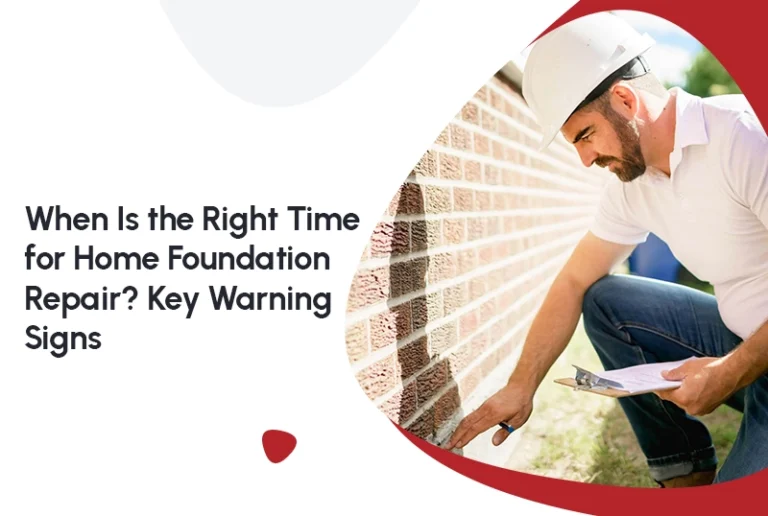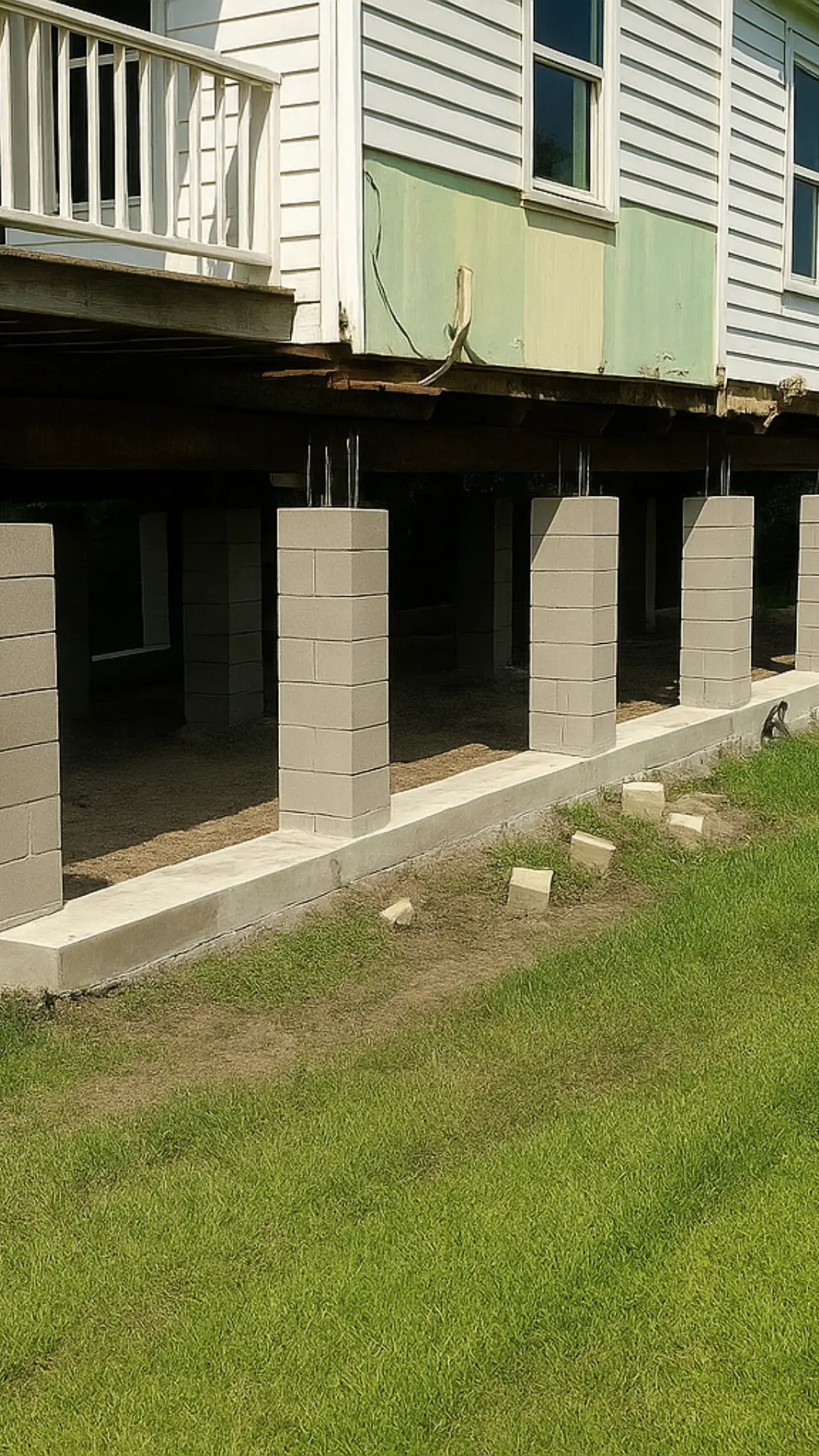Foundation issues are never fun, but what if you could solve them without ripping up your floors or causing unnecessary damage to your home’s interior? That’s where tunneling under slab comes in. This method has become a go-to solution for homeowners who want reliable repairs without the mess.
If your home sits on a slab and you’ve been told you need extensive interior demolition for plumbing or structural fixes, there’s good news: you have a smarter, cleaner alternative.
Let’s dive into how tunneling works, why it’s beneficial, and what you should know before choosing a repair company.
Why Tunneling Under Slab Beats Breaking Through It
When it comes to fixing foundation or plumbing problems beneath your home, there are typically two routes: break through the slab from the inside or dig underneath from the outside. For many, the second option, tunneling under slab, makes far more sense.
This technique involves digging narrow tunnels underneath your home from the outside, allowing contractors to reach problem areas without damaging your flooring, tile, or carpet. It’s ideal for slab leak repairs, pipe replacements, and even targeted structural fixes.
When paired with concrete slab foundation repair, tunneling becomes part of a comprehensive solution. Instead of creating a giant mess inside your home, tunneling gives repair professionals the room they need to work from below, with minimal disruption to your daily life.
Read more about: Slab House Foundation: Can It Be Raised or Repaired?
How Tunneling Works with Slab Foundations
Picture this: You’ve just been told there’s a leak under your slab. Instead of jackhammering through your living room floor, a crew begins digging a narrow, three-foot tunnel along the side of your home. They carefully work their way under the slab, reaching the affected area with precision.
The benefits?
- No dust or debris inside your house
- No need to move furniture or tear up flooring
- Safer access for professionals
- Full restoration of plumbing or foundation systems from below
Concrete slab foundation repair often requires work in hard-to-reach areas. Tunneling provides access while preserving the integrity of your living space, making it an ideal approach for busy households or homes with custom flooring.
Tunneling Isn’t Just for Slabs
You may think tunneling is only for slab-based homes, but that’s not the case. Homes with a pier and beam foundation can also benefit from tunneling, especially when access from traditional crawl spaces is limited or when deeper structural elements are affected.
Pier and beam systems elevate the house above ground, resting it on a network of vertical piers and horizontal beams. While many repairs can be done from underneath, sometimes issues in deeper piers or plumbing systems make tunneling the safer, more efficient option.
For example, in older pier and beam homes, moisture damage or broken water lines beneath the structure can be repaired by tunneling in from the outside, minimizing damage to the flooring above.
So, whether you have a slab or a pier and beam foundation, tunneling can be tailored to fit your home’s design and your repair needs.
What to Expect During the Tunneling Process
Tunneling under a slab isn’t as intrusive as it sounds, and when done by professionals, the results are impressive. Here’s what typically happens:
- Inspection and Planning
The team inspects your property and determines the best tunnel path based on your foundation layout and problem area. - Digging the Tunnel
A crew begins digging from the exterior wall, creating a tunnel 2–3 feet below the slab. The tunnel usually ranges from 3–4 feet wide, allowing easy access for repair tools and personnel. - Repair Work
Once the tunnel reaches the affected zone, plumbing repairs, slab reinforcement, or leak repairs are performed from beneath the home. - Tunnel Backfill and Compacting
After repairs are completed, the tunnel is refilled and compacted to prevent future settling. - Surface Restoration
The excavation area around your home is restored, and the yard is cleaned up to its original state.
It’s efficient. It’s clean. And best of all—it’s minimally disruptive.
Can Tunneling Be Used Alongside Leveling?
Absolutely. Tunneling is often combined with concrete leveling when addressing uneven slabs. If part of your foundation has settled, professionals might use polyurethane foam or slurry under the slab to lift and level it, while using tunnels to access deeper structural issues or plumbing lines.
This combo approach ensures your home is fully supported from above and below. It’s an excellent way to address multiple issues in one go, especially if you’re already investing in serious repairs.
Concrete leveling handles surface shifts, while tunneling ensures underlying systems are properly repaired—all without ripping your house apart.
Conclusion: Why Tunneling Under Slab Is a Smart Choice
If you’re dealing with hidden plumbing leaks, foundation movement, or any structural concern beneath your home, tunneling under slab is a smart, non-invasive alternative to interior demolition. It protects your flooring, keeps your home clean, and allows for comprehensive repairs that last.
Whether you live on a concrete slab or a pier and beam system, tunneling gives you peace of mind and long-term stability. When paired with solutions like concrete slab foundation repair and concrete leveling, it offers a complete foundation strategy that prioritizes your home’s safety and your convenience.
Don’t let foundation or plumbing problems stress you out. Choose a repair method that respects your home and your lifestyle.
FAQs: Tunneling Under Slab
1. How much does tunneling under a slab cost?
The cost depends on the length and depth of the tunnel, soil type, and type of repair needed. On average, it ranges from $300 to $600 per linear foot.
2. How long does the tunneling process take?
Most tunneling projects take 1–5 days, depending on the complexity of the job.
3. Is tunneling safe for my home?
Yes. When performed by licensed professionals, tunneling is safe, controlled, and designed to minimize risk to your home’s structure.
4. Can tunneling be used in conjunction with other repairs?
Definitely. Tunneling is often paired with concrete leveling, plumbing replacements, or even full concrete slab foundation repair.
5. Does tunneling damage my yard?
Minor disruption is expected during excavation, but a quality repair company will backfill and restore the landscape to its original condition.
